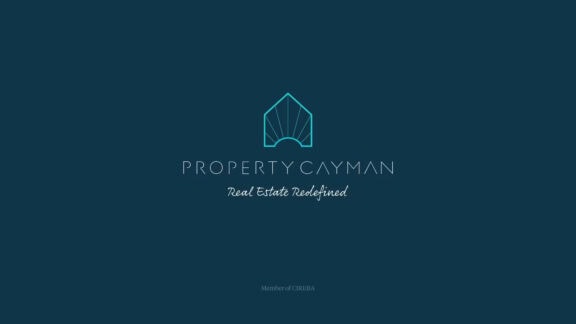
How loyalty programs can increase your revenue (& win awards)

It seems counterintuitive to offer people free money and expect your in-store or online profits to increase. As a business owner, your gut is probably telling you that’s a bad idea and an easy way to lose a lot of cash.
Well, if you’re going to hand out dollar bills to people on the street, it probably is an expensive habit you need to quash. However, if you have the right strategy, know your audience, and are doing this as part of a loyalty program, the fact is you’re going to make a lot more money.
A brief nod to the giants who came before
Loyalty programs aren’t new — you can trace the idea back to the 1700s with American merchants handing out copper coins that customers could later redeem for items — but their use only became popular in the latter half of the 20th Century.
Back then, loyalty programs were simple cards. A customer turned up, presented their card, and you swiped that bad boy through the till to give them points. The odds are the customer never really knew how many points they had, and the odds are the store was perfectly fine with them forgetting. Best Buy, CVS, and more; many retailers transformed themselves into titans propped up by loyalty programs.
And, because people noticed that loyalty programs skyrocketed sales, they started becoming sexy and exciting as more and more businesses got on board.
Cue a new chapter in loyalty programs, entering stage right in the 2000s and coinciding with a technological revolution. As the internet grew legs, loyalty programs were integrated into tech stacks, and things got spicy.
Think we’re over-emphasising the power of loyalty? Starbucks has one of the biggest loyalty programs in the world – with 25 million members, their rewards now contribute to over 53% of spending in stores. They’ve doubled their revenue with a rewards program.
So, the big players do it. We get it. Why should we?
It all comes down to the bottom line: loyalty programs increase customer spending by a minimum of 30% for most businesses. For some, that number is closer to 60%.
There’s no better reason to do it than for that increased revenue. And, with a wealth of tech stacks available to in-store and online brands, it’s never been easier to set up a loyalty program that integrates with your POS or e-commerce provider.
Yeah, but why does it work?
The science behind loyalty points is pretty simple but has two main pillars:
1. Positive reinforcement: If you reward me for doing something, I will likely do it again. Translation: If you give me reward points when I buy coffee, I will probably purchase coffee again.
2. Goal anticipation: The closer you are to completing a goal, the more effort you put into achieving it. Translation: I’ll spend more money faster if I perceive a large reward, like a free piece of merchandise, is on the horizon.
So, how do we get started with a loyalty program?
Loyalty point programs are grounded in science and psychology, so you must follow the science.
Know your numbers
Any good loyalty program can go astray if you don’t know your potential ROI. So how can you calculate it? First, subtract rewards cost from the revenue, then divide by rewards cost and multiply by 100. That will give you an estimated ROI.
The singularly biggest mistake most businesses make at this stage, or when evaluating ROI, is to assume that loyalty program customers would have purchased items without the rewards. Loyalty programs are opt-in, so anyone using the rewards platform is telling they want and value rewards.
Send frequent reminders
Customers who think they’re already on their way to a goal or reward are more likely to achieve it. How can you use this in a rewards program? Well, if you give new customers extra points or points for visiting a particular store, you will encourage spending. Don’t have new loyalty users? Shorten the distance towards the next loyalty goal with bonus points given to disengaged customers.
Push urgency
Fear of losing items or money is far more potent than a desire to gain money. You can use this to your advantage by adding perceived scarcity and urgency to your loyalty program. For example, expiry periods and redemption limits can motivate customers to purchase items and boost sales.
Understand the power of effort
Sometimes the more work you put into something, the more you value it. So, how can you get more commitment? The easiest way is to encourage your users to personalise their loyalty program app or portal and reward them with a small number of points. For example, you can reward customers for filling out a profile, customising colours, or adding a profile picture.
Know social status & premium loyalty
People also love social status, and you can use that to your advantage with VIP or premium loyalty programs. Premium loyalty isn’t as hard to find as you think — 63% of consumers pay for at least one loyalty program. And, here’s the kicker — even if your customers have to pay for their loyalty (think ASOS membership), according to a McKinsey study, premium loyalty programs still drive higher purchase frequency, basket size, and brand affinity as compared to free loyalty programs (around double).
Retention is as important as acquisition
Once you have your loyalty program users, you need to keep them. Studies have found that increasing retention by as little as 5% can increase revenue by 25%. In the Starbucks rewards program, personalisation is a huge part of that retention. In late 2021 active users had increased 48% annually. Starbucks doesn’t flake out on going the extra mile – you get a free birthday treat every year, access to games and exclusive offers tailored to your normal orders. The app makes it feel like it was built entirely for you and to meet your needs.
How do you personalise things at scale (like with the 25 million members Starbucks has)? Behavioural segmentation coupled with gamification becomes key. You can group audiences by average spend, their standard order, and how frequently they visit your stores to show them content that feels relevant to them.
Does AirVu Media run loyalty programs?
Sure, we work with Bite Club, Cayman’s best loyalty program. You can read about how it works here. Feel free to reach out and ask us anything about the program or how we can help you.
It was recently shortlisted for CIMPA’s 2022 Campaign of the year and is one of the reasons that AirVu Media won CIMPA’s Agency of the Year award in 2022.
